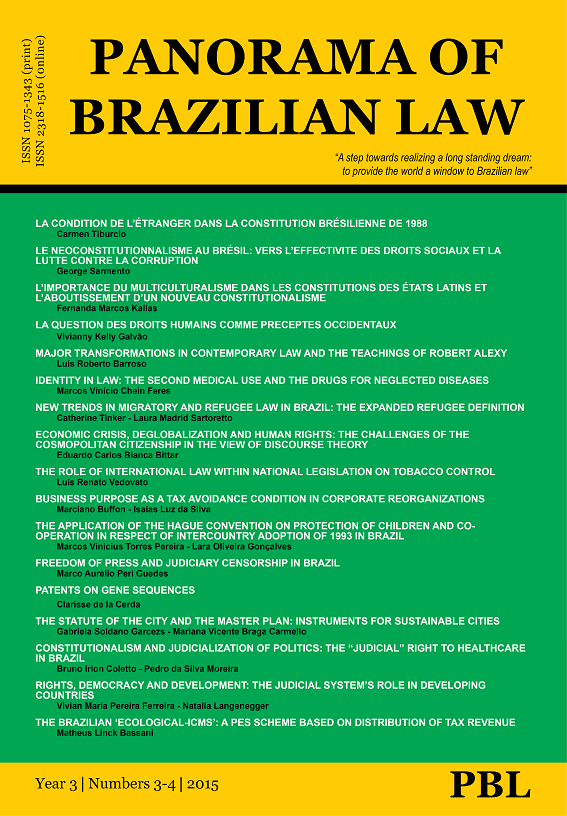IDENTITY IN LAW: THE SECOND MEDICAL USE AND THE DRUGS FOR NEGLECTED DISEASES
DOI:
https://doi.org/10.17768/pbl.y3.n3-4.p124-142Περίληψη
This paper is dedicated to presenting a normative political institutional approach, which may creatively reconstruct the hermeneutics of the Brazilian Industrial Property Rights Act in the specific case of the second medical use of known substances in the matter of drugs for neglected diseases. However, the fact of having the same chemical substance, as a point of departure, might signify that the incremented drug does not fulfil the requisites of patentability according to the traditional legal deduction practised in Brazilian courts. Methodologically, the theoretical reference here applied consists of the fusion between the ideas of law as integrity, developed by Dworkin, and law as identity, complemented by Taylor’s social theory of identity and Bankowski’s proposal of living lawfully. In fact, this methodological approach proposes the reconstruction of a system of analytical concepts based on contemporary legal theory in order to legitimatise public decisions whose purpose is to foster the research and development of drugs for neglected diseases. In this context, the legal concepts of novelty, non-obviousness and industrial application listed in the Brazilian Industrial Property Rights Act are reinterpreted according to the theoretical reference of identity in law.
Λήψεις
Δημοσιευμένα
Πώς να δημιουργήσετε Αναφορές
Τεύχος
Ενότητα
Άδεια
Panorama of Brazilian Law employs Open Journal Access policies.
Authors are fully and exclusively responsible for their submissions.
Authors who publish with this journal agree to the following terms:
- Authors retain copyright and grant the journal right of first publication with the work simultaneously licensed under a Creative Commons Attribution-NonCommercial-ShareAlike 4.0 International License that allows others to share the work on a non-comercial basis with an acknowledgement of the work's authorship and initial publication in this journal and indicating if any changes were made. If you remix, transform, or build upon the material, you must distribute your contributions under the same license as the original.
- Authors are able to enter into separate, additional contractual arrangements for the non-exclusive distribution of the journal's published version of the work (e.g., post it to an institutional repository or publish it in a book), with an acknowledgement of its initial publication in this journal.

